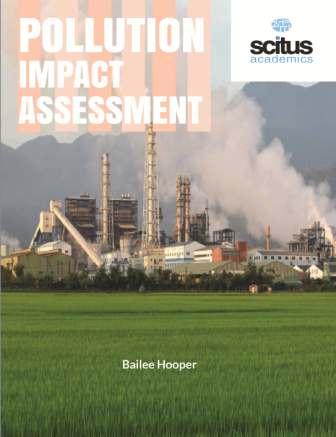At present, pollution is happening on a vast and unexpected scale across the globe. Trends regarding pollution are in two alarming directions: first, towards large and growing releases of certain chemicals, which are now drastically altering natural systems on a global scale; and, second, towards a steady increase in the use and release of countless biocide products and toxic substances into the setting. Man causes damage to the atmosphere, to the water, to the land, to the various elements of the environment and to the ecosystem itself. There is too much man-made massive environmental destruction that the future ahead is jittery enough to shake us all. Population growth, gradual economic and industrial development, urbanization and injurious planning, without due regard for sustainable development, have led to a variety of environmental changes. Human activities cause environmental changes in the form of emissions and destruction that cause widespread damage to living organisms in the biosphere. The consequence is the destruction of the ecological balance, a growing threat to the whole life support system that is facing rapid extinction. The most striking reason for environmental degradation and, therefore, the global environmental crisis is the deterioration of human-environmental relations due to the rapid rate of exploitation of resources, technological advancement and industrial expansion. The pace of environmental change and the subsequent environmental degradation due to human activities has been so rapid and widespread. The effect of man on the environment through his economic activities is diverse and highly complex, as the alteration or modification of the natural state and process contributes to several changes in the biotic and abiotic components of the environment.
This book gives an insight into the effects of environmental pollution from air pollution, water pollution, land and soil waste pollution on humans due to diseases and problems, animals and trees and plants. The book focuses on the efficiency of the environment. It covers three environmental media (air, water and soil). Different contaminants, their origins and transformations and the impacts on ecosystems and human health are addressed for each particular medium. Ultimately, we are covering environmental regulations and remediation technologies. Environmental impact assessment is a method for effective management of the environment. It includes the compilation, evaluation and operation of biological, physical and social data. The goal of the environmental assessment is to force developers to recognize the importance of environmental factors in the planning of construction and to reduce the impact on these factors. The goal of the environmental assessment is to ensure environmental sustainability. The negative health effects of air pollution have created considerable interest and suggest that exposure to air pollution raises health risks, including adverse cardiovascular, respiratory, pulmonary and other health outcomes. The economic and social damage caused by air pollution as a result of its negative effects on public health has been widely discussed. In this book, you will consider that this kind of emissions not only seriously affects humans due to diseases and problems but also animals and trees/plants. This is a book designed to address the criteria of environmental or earth science for non-majors in different disciplines.












Reviews
There are no reviews yet.